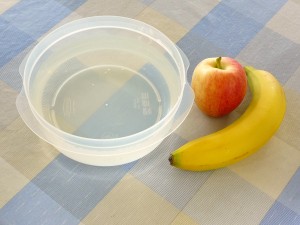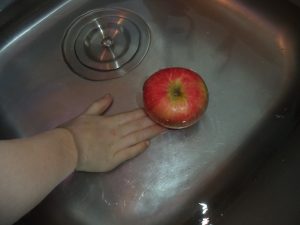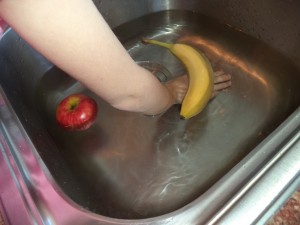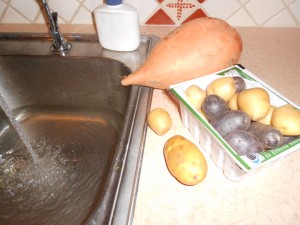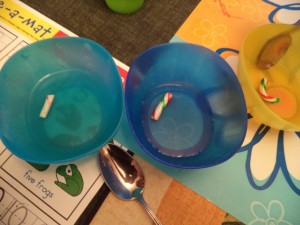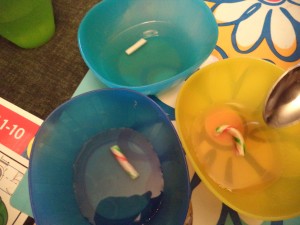As soon as I read about this Christmas science experiment, I had to try it but the kids were both busy. Dancing bells? I also tried some dried cranberries. I used the excuse of wanting to see how it worked before doing it with them. Truthfully, though, I wanted to try it more than once.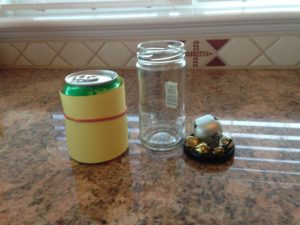 The name of this science fun, Dancing Jingle Bells, starts lots of questions immediately. How can bells do that? Will they really dance? What does experiment use? I could hardly read through all of the post. Fortunately, a few bells were right at hand with the box of decorations.
The name of this science fun, Dancing Jingle Bells, starts lots of questions immediately. How can bells do that? Will they really dance? What does experiment use? I could hardly read through all of the post. Fortunately, a few bells were right at hand with the box of decorations.
This experiment needs a glass jar or drinking glass, bells, and a clear, fizzy soda pop. Pour the soda pop into the jar or glass and drop in a few bells. It’s hard to see but bubbles start to form on the inside of the glass and collect all over the bells. Nothing happened for a while but suddenly, one of the bells popped up, stayed at the top, and then slowly drifted back down. Just about the time I thought it was only going to happen once, another bell danced its way to the top. The bells danced a few more times but now there were fewer bubbles.
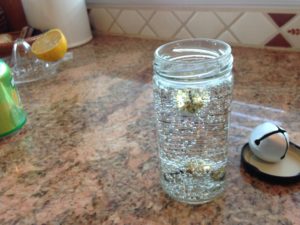
We’ve done this experiment before with raisins. From baking earlier in the week, there were a few dried cranberries left over. Cranberries are both Christmasy and small and did they ever dance. Up and down like yoyos. Even after more than 20 minutes, cranberries were still coming to the surface. When some of the bubbles popped, the berries would drift back down to recharge.
Although there were three sizes of bells, the largest one took up too much room in the jar to use. I was sure the smallest one of the bells would dance if any of them did, but it didn’t at all. This small bell has been in the decoration box for years so quite likely it is thicker and heavier even if smaller. That’s what science is about, finding answers to questions.
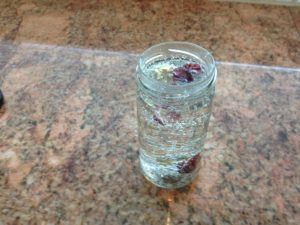
When doing this experiment with kids, talk about it first. What do they think will happen? Will this work? What do they know about soda pop and bubbles? There will be lots more to talk about after doing it too! Can you hardly wait to try this Christmas science experiment of dancing bells and cranberries?

